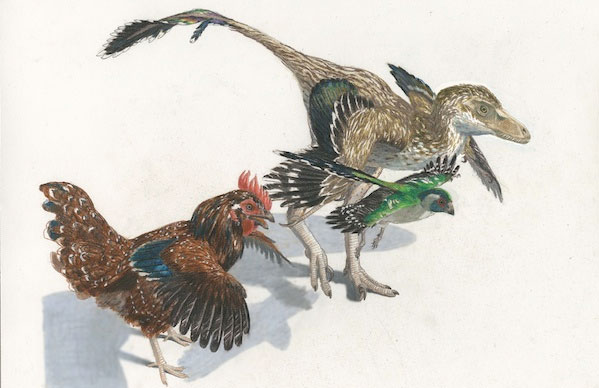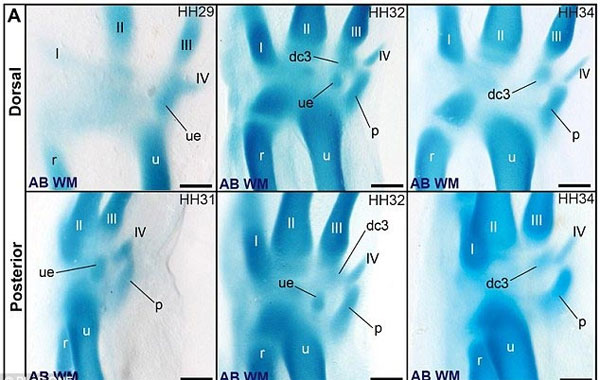Can evolution go ... backwards?
In 1890, Belgian paleontologist Louis Dollo stated that evolution could not go backward. This statement is endorsed by the scientific community. However, a new study has rejected this notion.
>>>Watching "human beauty" if evolved from pigs, cows, bears
Researchers at the University of Chile found that changes in evolution could be reversed, meaning that some animals could return to ancient biological characteristics. This conclusion was drawn after they discovered that birds had re-grown a bone that dinosaurs had previously eradicated, millions of years ago.

According to new research, birds have re-grown a piece of bone that once disappeared in 2-foot dinosaurs millions of years ago.
According to Smithsonian magazine, the team led by Dr. Alexandar Vargas examined fossils and embryos of birds today. They discovered that, 230 million years ago, two-legged dinosaurs no longer needed strong pasterns like four-legged dinosaurs, so they became weak. The number of bones in the upper limb neck has decreased from 11 to 3, in which a special bone disappears, becoming pea bone.
However, according to research by Dr. Vargas and colleagues, the above bone segment reappears when dinosaurs evolve into birds and begin to fly. The new bone segment, called the bony bone , grows exactly where the pea bone once existed. It allows the bird wings to remain rigid as they fly upward.

Pea bone (symbol ue) forms and disappears during the development of chicken embryos.(Photo: Daily Mail)
Vargas said the view that a bone fragment can disappear and reappear in evolution has been greatly denied in evolutionary biology. The expert acknowledged, part of the problem, that paleontologists studied fossils, while biologists focused on embryos.
To get a new discovery, Vargas's team studied both fossils and skeletons of birds. They also searched for certain proteins in embryonic 3D skeletons, which are involved in collagen production, forming connective tissue.
This method allows them to detect whether a bone is formed from the integration of two separate or evolutionary structures from a single segment. In addition to the disappearance and re-emergence of pea bone, they also discovered that a semicircle of bone in the bird is a product of a combination of two upper neck bones from dinosaurs.
- Biological evolution
- Video: Overcome with the ability to play Bowling backwards
- The woman could only run backwards
- The fruit fly flies backwards
- Creating super fluid, pushing forward will accelerate backwards
- This is evidence that human evolution is still very much 'error'.
- People cannot predict their own evolution
- Marvelous girl has the ability to twist backwards 180 degrees
- People have not really evolved to 'peak'?
- Middle age is the pinnacle of evolution
- Human evolution has ended
- 9 reasons Darwin's theory of evolution is wrong
 'Fine laughs' - Scary and painful torture in ancient times
'Fine laughs' - Scary and painful torture in ancient times The sequence of numbers 142857 of the Egyptian pyramids is known as the strangest number in the world - Why?
The sequence of numbers 142857 of the Egyptian pyramids is known as the strangest number in the world - Why? History of the iron
History of the iron What is alum?
What is alum?